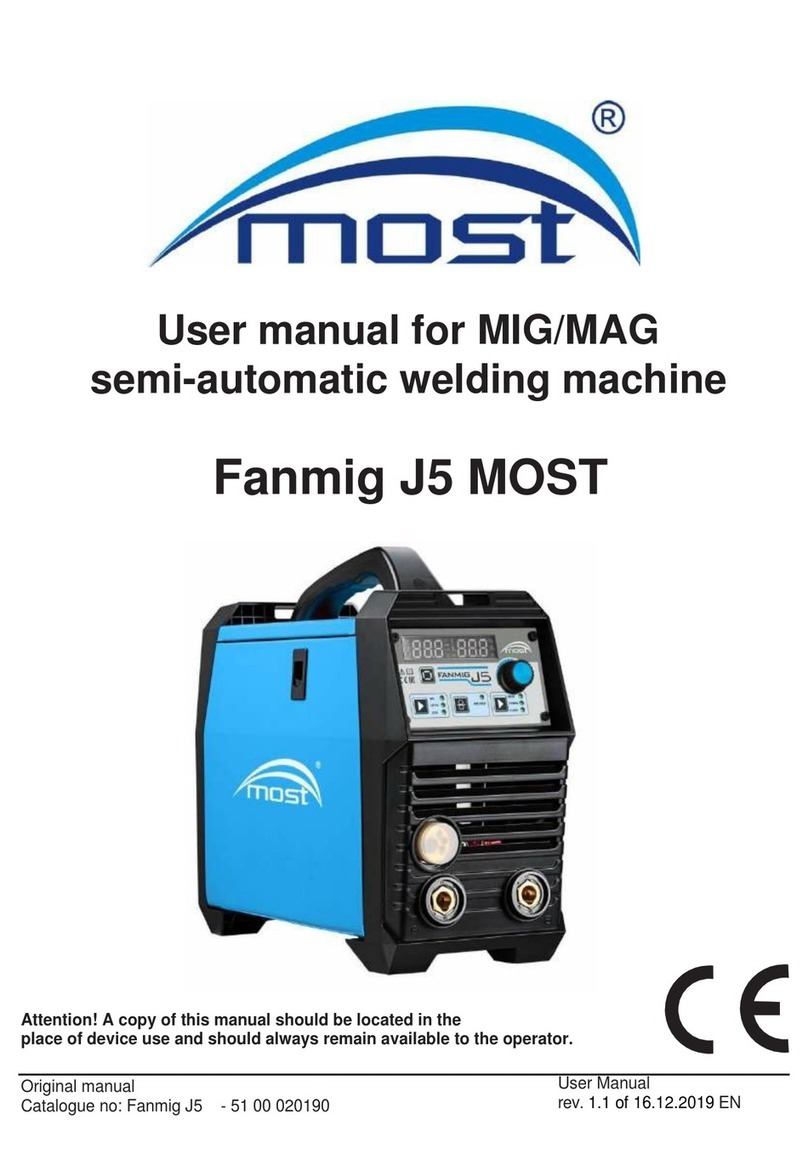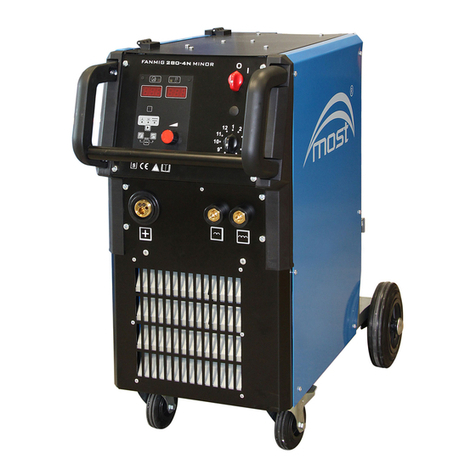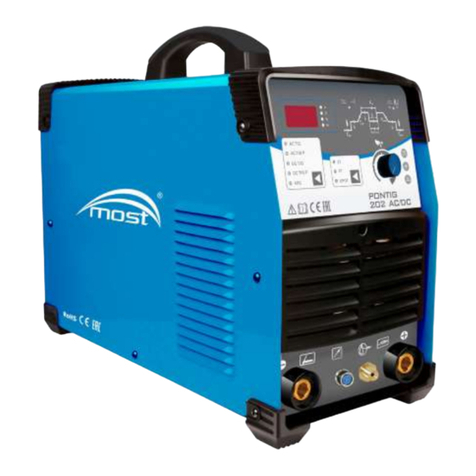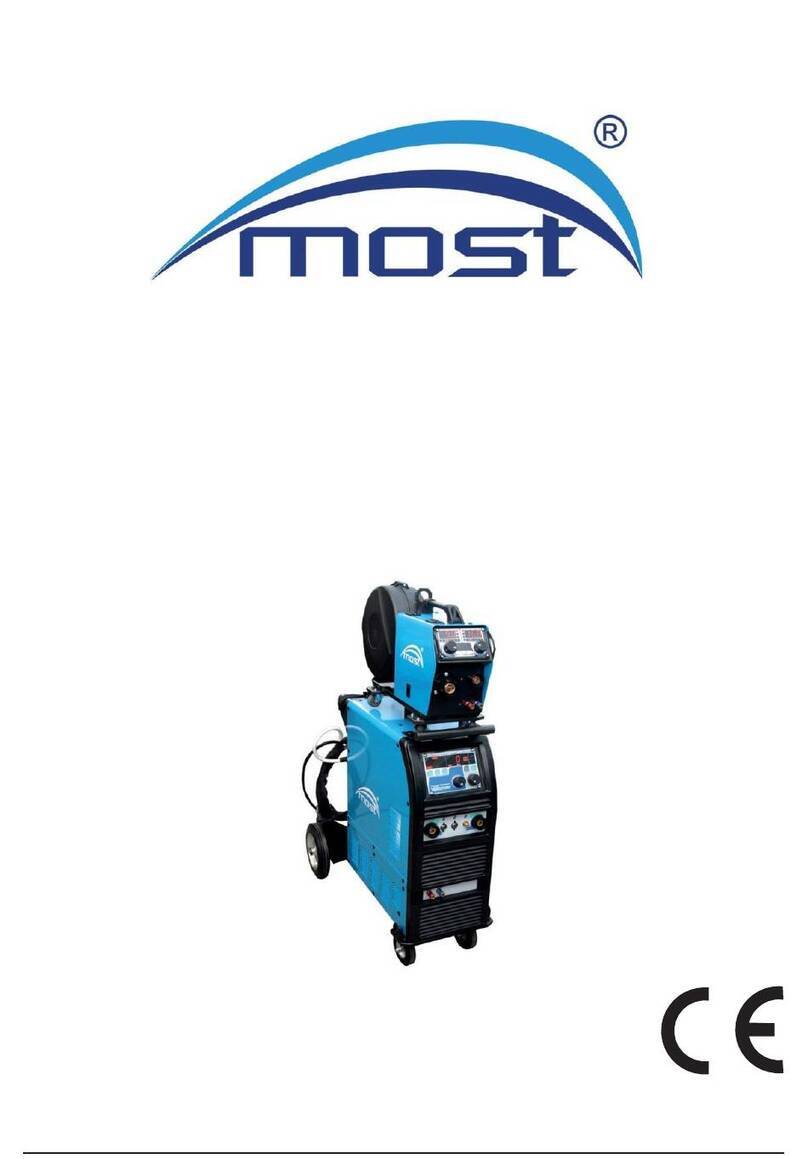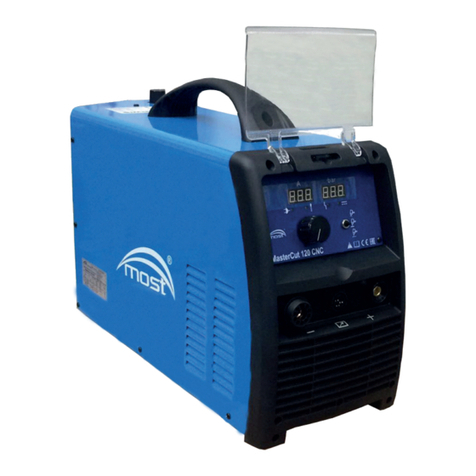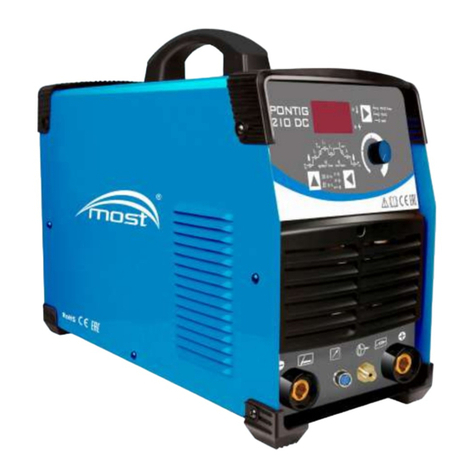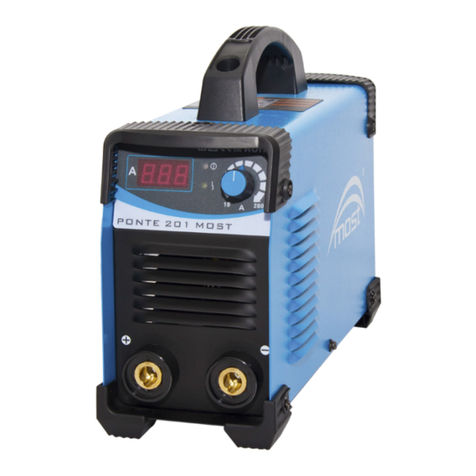
Fanmig 322 mobil Pulse
-4-
Operation Manual
rev. 1.1 of 30.01.2019EN
INTRODUCTION
Commissioning and normal operation are possible only after reading the carefully reading
following manual. The MIG/MAG, and MMA welding requires meeting the conditions
corresponding to electric arc welding and re regulations. Device operator should be equipped
with appropriate personal
health and safety equipment. It is necessary to use a set of personal protective equipment in
accordance with the provisions of Directive of the Council Directive No. 89/686/EC. Personal
protective equipment includes: welding mask, welding gloves, protective apron, leather shoes,
non-ammable welding clothing.
Despite the high technical standard of the device, the personnel should represent considerable
discipline in approach to health and safety requirements to protect against harmful and health
hazardous factors developed from welding technology.
OPERATING CONDITIONS
In order to ensure adequate service life and trouble-free operation it is recommended to:
• do not place or use this device on an inclined surface (of more than 15º),
• do not use the device for pipe defrosting,
• the device needs to be located in a place with free clean air circulation (to and from the fan
without obstacles). When connected to electrical network the device must not be covered (with,
for example, paper or cloth),
• minimize the amount of dirt and dust that can get into the device,
The device has an IP23S protection rating for housing and may be exposed to atmospheric
fallout and is capable of operating outdoors.
• do not use the device for welding tanks previously used for ammable substances storing.
GASES AND FUMES
Using MIG / MAG, TIG and MMA techniques produces harmful gases and fumes containing
ozone and hydrogen as well as oxides or metal particles. Therefore, the welding work station
should be tted with very good ventilation (dust and smoke extraction or airy location). Metal
surfaces intended for welding should be free from chemical contamination, especially
degreasers (solvents) that decompose during welding process and produce toxic gases.
Welding of galvanized, cadmium-coated or chromium-plated parts is permitted only when a
suction and ltering device is tted, and with introduction of fresh air to the welding work
station.
RADIATION
Ultraviolet emission radiated when welding is harmful to eyesight and skin. Therefore a welding
mask with protective lters is required. Welding work station should meet certain requirements
and include:
• adequate lighting system,
• xed or movable protection screens, governing bystanders against radiation eects
(depending on requirements),
• location with wall colour providing appropriate for radiation absorption.

